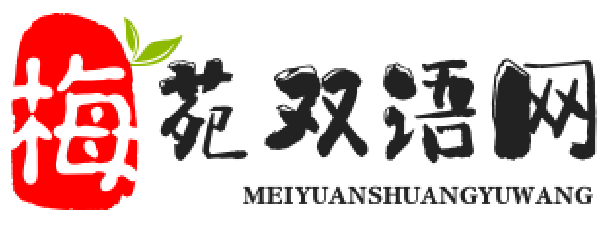近几年雅思作文趋势分析
- 题型稳定:Task 2 依然是四大主流题型:同意与否、讨论双方观点、利弊分析 和 报告类问题。“同意与否”和“讨论双方观点”最为常见。
- 话题贴近现实:题目越来越关注全球化、科技发展、社会文化、环境、教育和个人发展等与考生生活息息相关的议题。
- 科技类:人工智能、社交媒体、远程工作/学习。
- 社会类:城市化、老龄化、文化融合与保护、工作与生活平衡。
- 教育类:在线教育、大学教育的目的、理论与实践。
- 环境类:气候变化、个人与政府的责任、可持续旅游。
- 政府类:政府应投资领域(如医疗、教育、艺术)、交通问题。
- 题目更具思辨性:很多题目不再是简单的“A好还是B好”,而是要求考生进行更深层次的探讨,在某些情况下A,而在另一些情况下B”,或者“A和B哪个更重要,为什么”。
- 对“任务回应”要求更高:考官非常看重你是否完整回答了题目的所有部分,并且论证是否充分、有逻辑、有具体例子。
高质量例文及解析
下面我将提供三篇不同题型和话题的例文,每一篇都包含题目、范文、词汇解析和思路解析。

例文1:同意与否题型
** Some people believe that the best way to increase road safety is to increase the minimum legal age for driving cars. To what extent do you agree or disagree?
范文:
While there are various measures to enhance road safety, I strongly disagree with the notion that raising the minimum legal driving age is the most effective solution. Although younger drivers may lack experience, this issue is better addressed through comprehensive education and stricter enforcement of traffic laws, rather than a blanket age restriction.
Proponents of increasing the driving age often argue that teenagers are inherently more impulsive and prone to risk-taking due to their underdeveloped prefrontal cortex. Statistics from many countries do show a higher accident rate among this demographic. However, attributing road accidents solely to age is an oversimplification. The root cause is often a lack of proper training and a disregard for traffic rules, which can be found in drivers of all ages. For instance, a middle-aged person who regularly uses their phone while driving poses just as significant a threat as an inexperienced teenager. Therefore, penalizing all young people by raising the age limit is an unfair and inefficient approach that fails to tackle the core problem.
A more effective strategy would be to implement a more rigorous and lengthy driver's education program. This could include not only the standard theoretical and practical tests but also mandatory defensive driving courses and hazard perception training. By ensuring that new drivers, regardless of their age, are exceptionally well-prepared, we can significantly reduce accidents. Furthermore, enforcing existing traffic laws with greater severity, such as through increased surveillance and heavier fines for speeding and using mobile phones while driving, would act as a stronger deterrent. These measures directly target irresponsible behaviour, which is the true culprit behind road accidents.
In conclusion, while the intention behind raising the driving age is commendable, it is not the optimal solution. By focusing on improving driver education through more comprehensive training and by enforcing traffic laws more strictly, we can create a safer environment for all road users in a more equitable and effective manner.
词汇解析:
- enhance road safety: 提高道路安全
- minimum legal age for driving: 法定最低驾驶年龄
- comprehensive education: 全面/综合的教育
- stricter enforcement: 更严格的执法
- blanket age restriction: 一刀切的年龄限制
- proponents: 支持者
- inherently more impulsive: 天生更冲动
- prone to risk-taking: 易于冒险
- underdeveloped prefrontal cortex: 前额叶皮层发育不成熟 (科学术语,增加文章说服力)
- demographic: 特定人群/人口统计群体
- attributing...solely to...: 将...完全归因于...
- oversimplification: 过于简单化
- disregard for traffic rules: 对交通规则的漠视
- penalizing: 惩罚
- inefficient approach: 低效的方法
- tackle the core problem: 解决核心问题
- rigorous and lengthy driver's education program: 严格且漫长的驾驶培训项目
- mandatory: 强制性的
- defensive driving course: 防御性驾驶课程
- hazard perception training: 危险感知训练
- deterrent: 威慑因素
- culprit: 罪魁祸首
- commendable: 值得称赞的
- optimal solution: 最佳解决方案
- equitable: 公平的
思路解析:
- 开头段:明确立场(不同意),并直接提出自己的观点(通过教育和执法更好),为全文定下基调。
- 让步段:先承认对方观点有一定道理(年轻人确实更容易出事故),展示客观性,但紧接着用 "However" 转折,指出其片面性(问题不在于年龄,而在于经验和态度),并举例说明各年龄段都有危险驾驶行为。
- 主体段:提出自己的两个核心解决方案。
- 更严格的驾驶教育,具体说明了培训内容,使建议显得可行且专业。
- 更严格的执法,提到了监控和罚款,直接针对“不负责任的行为”。
- 结尾段:重申立场,总结自己的两个方案,并再次强调其“更公平、更有效”的优势,与开头呼应。
例文2:讨论双方观点题型
** Some people think that universities should provide graduates with the knowledge and skills needed in the workplace. Others believe that the main function of a university education is to help their students' intellectual growth. Discuss both views and give your own opinion.
范文:
The primary purpose of higher education has long been a subject of debate. On one hand, there is a strong argument that universities should act as vocational training centers, equipping students with practical skills for employment. On the other hand, many believe that the fundamental role of a university is to foster intellectual development and critical thinking. This essay will explore both perspectives before I argue that a balanced approach is most beneficial.
Advocates for the first view emphasize the practical and economic pressures facing graduates in a competitive job market. In an era where tuition fees are soaring, students and their families expect a clear return on their investment. Therefore, universities should collaborate with industries to design courses that teach specific, in-demand skills such as data analysis, coding, or digital marketing. This pragmatic approach ensures that graduates are immediately productive and can secure stable careers, which is crucial for both individual well-being and societal economic stability.
Conversely, proponents of intellectual growth argue that university is not merely a vocational school. Its core mission is to cultivate well-rounded individuals who can think independently, question assumptions, and engage with complex ideas. This is achieved through a broad-based curriculum in the arts, humanities, and sciences, which encourages students to explore diverse fields of knowledge. For example, studying philosophy or history may not directly teach a job skill, but it hones a student's ability to reason, argue, and understand the human condition, making them more adaptable and insightful professionals in the long run.
In my opinion, while the acquisition of practical skills is undeniably important, it should not come at the expense of intellectual growth. A university education that only focuses on job-specific training risks producing graduates who are technically proficient but lack the creativity and critical thinking needed to solve novel problems. The most effective model is one that integrates both elements. Universities can provide specialized, skills-based modules within a broader framework that encourages intellectual exploration. This ensures that students are not only ready for their first job but are also equipped with the intellectual tools for lifelong learning and career advancement.
词汇解析:
- higher education: 高等教育
- vocational training center: 职业培训中心
- intellectual growth: 智力发展
- foster: 培养,促进
- critical thinking: 批判性思维
- a balanced approach: 一种平衡的方法
- advocates for: ...的支持者
- practical and economic pressures: 实际和经济压力
- competitive job market: 竞争激烈的就业市场
- tuition fees: 学费
- return on investment: 投资回报
- collaborate with industries: 与行业合作
- in-demand skills: 热门技能
- pragmatic approach: 务实的方法
- societal economic stability: 社会经济稳定











